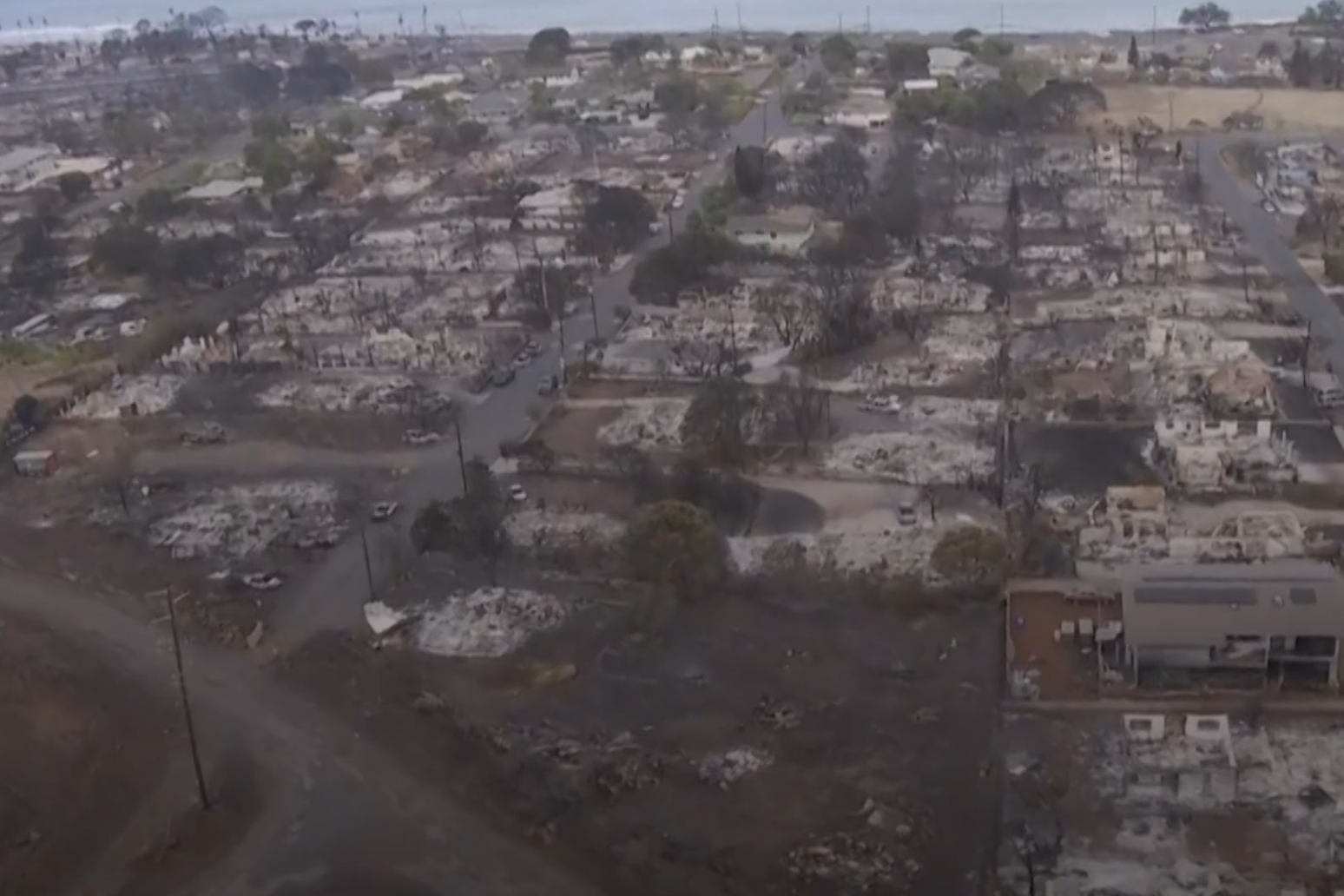
It’s now the deadliest natural disaster in the state’s history
Residents of historic Lahaina have been allowed back home to take stock of their shattered homes and lives as the toll rose to 67 confirmed dead in this week’s wildfires
Blackened hulks of burned-out cars, the pavement streaked with melted and then rehardened chrome.
Block after block of flattened homes and businesses. Incinerated telephone poles, and elevator shafts rising from ashy lots where apartment buildings once stood.
A truck bed full of glass bottles, warped into surreal shapes by the furious heat.
Anthony Garcia assessed the devastation as he stood under historic Lahaina’s iconic banyan tree, now charred, and swept twisted branches into neat piles next to another heap filled with dead animals — cats, roosters and other birds killed by the smoke and flames. Somehow it made sense in a world turned upside-down.
“If I don’t do something, I’ll go nuts,” Mr Garcia said, who lost everything he owned. “I’m losing my faith in God.”
The fires tore through parts of Maui and were still short of full containment and being battled by firefighters.
Attorney general Anne Lopez’s office announced it will conduct a comprehensive review of decision-making and standing policies leading up to, during and after the wildfires.
She said in a statement: “My Department is committed to understanding the decisions that were made before and during the wildfires and to sharing with the public the results of this review.
“As we continue to support all aspects of the ongoing relief effort, now is the time to begin this process of understanding.”
Associated Press journalists also witnessed the devastation, with nearly every building destroyed on Front Street, the heart of Lahaina and the economic hub of the island.
Surviving roosters, which are known to roam Hawaii streets, meandered through the ashes, and there was an eerie traffic jam of charred cars that didn’t escape the inferno.
“It hit so quick, it was incredible,” resident Kyle Scharnhorst said as he surveyed his apartment complex’s damage in the morning. “It was like a war zone.”
The wildfires are the state’s deadliest natural disaster in decades, surpassing a 1960 tsunami that killed 61 people.
An even deadlier tsunami in 1946, which killed more than 150 on the Big Island, prompted the development of the territory-wide emergency system that includes sirens, which are sounded monthly to test their readiness.
But many fire survivors said in interviews that they did not hear any sirens or receive a warning that gave them enough time to prepare, realising they were in danger only when they saw flames or heard explosions nearby.
Lynn Robinson, who lost her home, said: “There was no warning.
“There was absolutely none. Nobody came around. We didn’t see a fire truck or anybody.”
Hawaii emergency management records show no indication that warning sirens sounded before people had to run for their lives.
Instead, officials sent alerts to mobile phones, televisions and radio stations — but widespread power and cellular outages may have limited their reach.
Governor Josh Green warned that the death toll would likely rise as search and rescue operations continue. Authorities set a curfew from 10pm until 6am on Saturday.
“The recovery’s going to be extraordinarily complicated, but we do want people to get back to their homes and just do what they can to assess safely, because it’s pretty dangerous,” Mr Green told Hawaii News Now.
The wildfire is the deadliest in the US since the 2018 Camp Fire in California, which killed at least 85 people and laid waste to the town of Paradise.
Published: by Radio NewsHub


